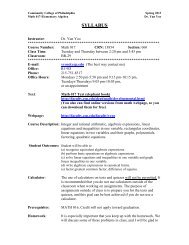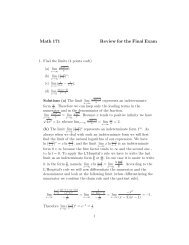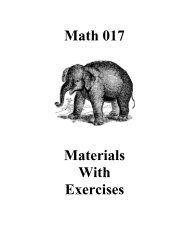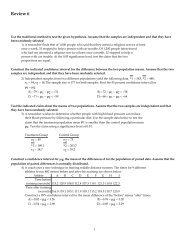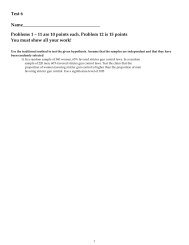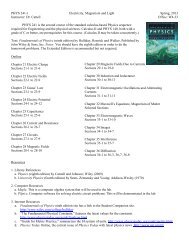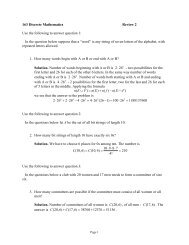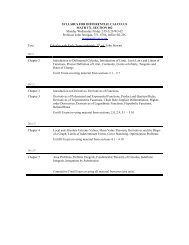Bayes' Theorem
Bayes' Theorem
Bayes' Theorem
- No tags were found...
Create successful ePaper yourself
Turn your PDF publications into a flip-book with our unique Google optimized e-Paper software.
4Intuitive Bayes <strong>Theorem</strong>The preceding solution illustrates the application of <strong>Bayes'</strong> theorem with its calculationusing the formula. Unfortunately, that calculation is complicated enough to create anabundance of opportunities for errors and/or incorrect substitution of the involvedprobability values. Fortunately, here is another approach that is much more intuitive andeasier:Assume some convenient value for the total of all items involved, thenconstruct a table of rows and columns with the individual cell frequenciesbased on the known probabilities.For the preceding example, simply assume some value for the adult population ofOrange County, such as 100,000, then use the given information to construct a table, suchas the one shown below.Finding the number of males who smoke cigars: If 51% of the 100,000 adults aremales, then there are 51,000 males. If 9.5% of the males smoke cigars, then the numberof cigar−smoking males is 9.5% of 51,000, or 0.095 × 51,000 = 4845. See the entry of4845 in the table. The other males who do not smoke cigars must be 51,000 − 4845 =46,155. See the value of 46,155 in the table.Finding the number of females who smoke cigars: Using similar reasoning, 49%of the 100,000 adults are females, so the number of females is 49,000. Given that 1.7% ofthe females smoke cigars, the number of cigar−smoking females is 0.017 × 49,000 =833. The number of females who do not smoke cigars is 49,000 − 833 = 48,167. See theentries of 833 and 48,167 in the table.CCTotal(Cigar Smoker) (Not a Cigar Smoker)M (male) 4845 46,155 51,000M (female) 833 48,167 49,000Total 5678 94,322 100,000The above table involves relatively simple arithmetic. Simply partition theassumed population into the different cell categories by finding suitable percentages.Now we can easily address the key question as follows: To find the probability ofgetting a male subject, given that the subject smokes cigars, simply use the sameconditional probability described in the textbook. To find the probability of getting amale given that the subject smokes, restrict the table to the column of cigar smokers, thenfind the probability of getting a male in that column. Among the 5678 cigar smokers,there are 4845 males, so the probability we seek is 4845/5678 = 0.85329341. That is,P(M | C) = 4845/5678 = 0.85329341 = 0.853 (rounded).Copyright 2010 Pearson Education, Inc.



